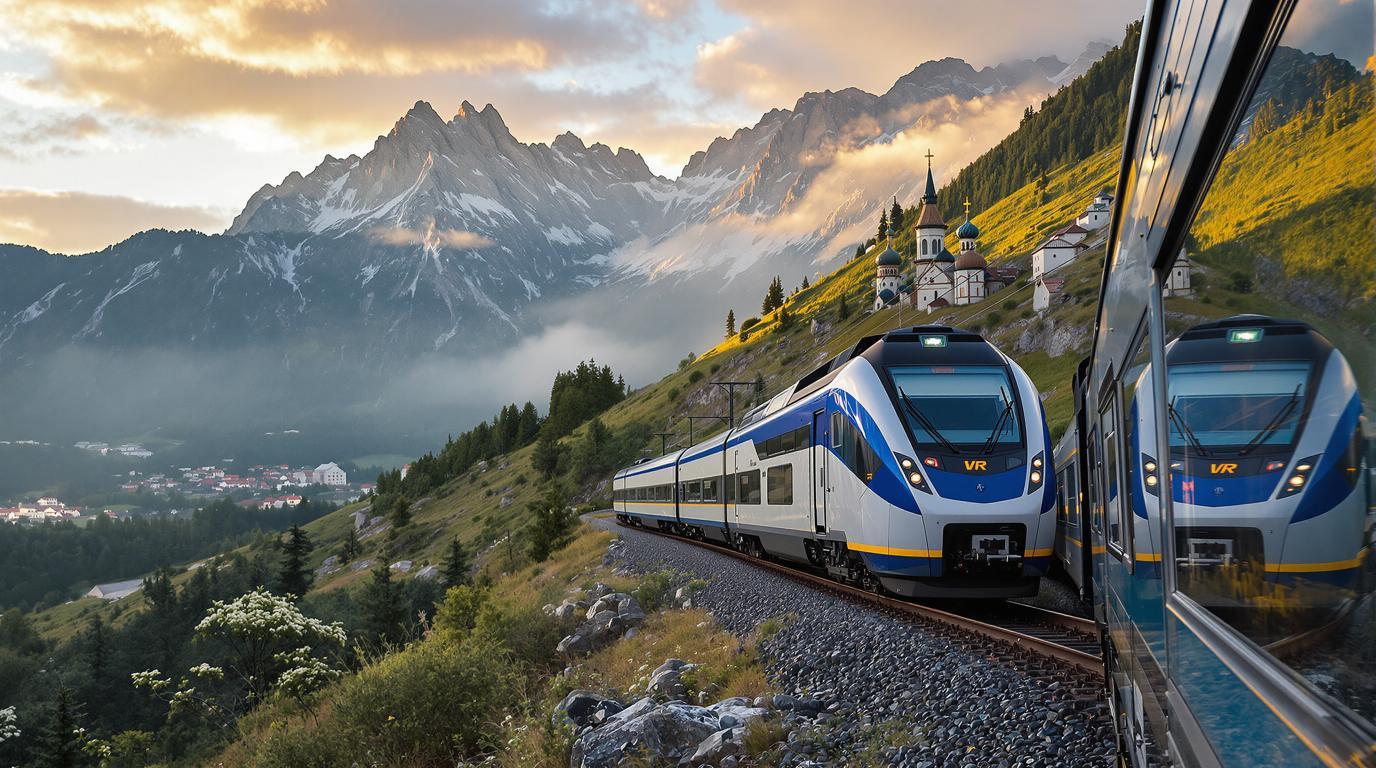From Budapest to Belgrade to Sofia: The Ultimate Eastern European Train Adventure for Under $200
A journey through three captivating capitals
Eastern Europe’s railway network offers one of travel’s greatest adventures: traversing Budapest, Belgrade, and Sofia for less than $200. These three capitals—each with distinct personalities—string together like pearls along an ancient trading route that has witnessed empires rise and fall.
The journey spans Hungary’s thermal bath culture, Serbia’s fortress-studded landscapes, and Bulgaria’s Byzantine splendor—all accessible via a network of trains and buses that reveal the region’s soul in ways no flight ever could.
Budapest: Where thermal waters and Habsburg grandeur collide
Your adventure begins in Budapest, a city where neo-Gothic parliament buildings stand in stark contrast to Turkish-era thermal baths. The Budapest Card provides unlimited public transportation and entry to many attractions, maximizing your experience while minimizing costs.
“Budapest is two cities in one—Buda’s hills offer panoramic views, while Pest pulses with energy and café culture. Take the time to experience both,” recommends Marton, a local tour guide who specializes in hidden corners of the city.
Don’t miss the Széchenyi Thermal Bath—where locals play chess while partially submerged in steaming mineral waters—before boarding your train southward to Belgrade.
The journey: Navigating the Budapest-Belgrade connection
Currently, the direct Budapest-Belgrade line is being upgraded as part of a massive infrastructure project. Until completion in 2025, travelers must take connecting services through Szeged and Subotica, making for an approximately 8-hour journey.
Pro tip: While waiting for train connections, explore Szeged’s magnificent Votive Church or sample the city’s famous paprika-infused fish soup. These impromptu stops often become unexpected highlights.
Belgrade: Where the Danube meets the Sava in spectacular fashion
Serbia’s capital greets you with a contrast of socialist-era architecture and ancient fortress walls at the confluence of two mighty rivers. The city’s beating heart is Skadarlija, a bohemian quarter where cobblestone streets lead to taverns filled with live Balkan music.
“To understand Belgrade, you must experience our concept of ‘splavovi’—floating clubs anchored along the rivers where locals dance until sunrise,” explains Milena, a Belgrade native and cultural historian.
If you’re seeking epic mountain landscapes and unspoiled wilderness, Europe offers stunning natural destinations beyond its urban centers.
Crossing borders: Belgrade to Sofia
The Belgrade-Sofia leg requires creativity, as direct train service is currently limited. Most travelers take a train to Niš before continuing by bus to Sofia. This transportation patchwork adds to the adventure, crossing the Balkan mountain range and offering glimpses of rural life.
For those seeking spiritual connections during their travels, monastery retreats in Southern Europe provide transformative experiences just a short detour from this route.
Sofia: Where gold-domed cathedrals meet Roman ruins
Bulgaria’s capital reveals itself through the magnificent Alexander Nevsky Cathedral, whose green-and-gold domes dominate the skyline. Sofia surprises with its layers—Roman ruins visible through glass panels in metro stations, Ottoman mosques, and Soviet monuments all coexisting within walking distance.
Budget travelers rejoice—Sofia offers free food tours through Balkan Bites, where you’ll sample regional specialties while learning about Bulgarian culinary traditions.
Hidden gems along the route
While the capital cities anchor this journey, countless treasures await between them. Like certain Nordic archipelagos with ancient histories, Eastern Europe hides remarkable cultures in plain sight.
In Hungary, stop at Kecskemét for its Art Nouveau architecture. In Serbia, visit Novi Sad’s Petrovaradin Fortress. Near Sofia, the Rila Monastery’s vibrant frescoes tell stories of Bulgaria’s spiritual heritage against mountain backdrops.
Practical budget wisdom
This journey costs under $200 through strategic planning. Book accommodations in advance (hostels average $15-25 per night), use city transportation passes, and eat at local markets rather than tourist restaurants. The Budapest-Belgrade-Sofia triangle offers exceptional value compared to Western European corridors.
For coastal alternatives with dramatic natural scenery, France’s dynamic tidal archipelagos provide equally budget-friendly adventures.
A cultural mosaic unveiled by rail
“Eastern Europe by train reveals the cultural shifts that once took centuries to traverse but now transform before your eyes in hours,” notes Dr. Elena Petrova, cultural anthropologist specialized in Balkan heritage.
The true magic of this journey lies in witnessing how Hungarian, Serbian, and Bulgarian cultures simultaneously preserve their unique identities while sharing elements from centuries of shared history.
For travelers seeking authentic experiences like those found in medieval French villages with centuries-old traditions, this Eastern European corridor delivers with remarkable affordability.
As your train pulls away from Sofia’s station—perhaps continuing onward to Istanbul or returning full circle—you’ll carry with you not just photographs but the rhythms of three distinct yet interconnected worlds that have quietly preserved European history’s most fascinating chapters.
